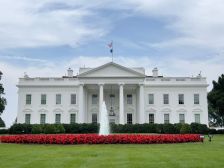In a landmark of the open data movement, President Barack Obama issued Thursday an executive order calling for agencies to make federal information open and machine-readable, creating a new default for how the government operates.
To help understand the executive order and the accompanying memo from the Office of Management and Budget, FedScoop has created a short guide to the White House’s new open data policy.
In a nutshell
All new and modernized government information resources will now be open and machine-readable to promote job growth, government efficiency and general social goodwill. The information will be managed as an asset throughout its lifecycle to promote interoperability and openness, and, wherever possible and legally permissible, to ensure data is released to the public in ways that make it easy to find, accessible and usable.
Brief open data history
The federal government has a long history of opening up data, dating back to the 1980s when weather and global positioning data were released to the public and spurned a number of new industries around them.
More recently, the memorandum on Transparency and Open Government instructed agencies to take specific actions to implement the principles of transparency, participation and collaboration, and OMB’s Open Government Directive required agencies to expand access to information by making it available online in open formats.
To help build on these efforts, the president issued May 23, 2012 a memo titled Building a 21st-Century Digital Government, also known as the Digital Government Strategy. The memo charged the federal chief information officer with developing and implementing a comprehensive governmentwide strategy to deliver better digital services to citizens.
Video
Agency responsibilities
As part of the new policy, agencies must:
- Collect or create information in a way that supports downstream information processing and dissemination activities, using machine-readable and open formats and data standards. Agencies must also ensure information stewardship through the use of open licenses and use common core and extensible metadata.
- Build information systems to support interoperability and information accessibility that are scalable, flexible and facilitate extraction of data in multiple formats.
- Strengthen data management and release practices along with creating and maintaining an enterprise data inventory and a public data listing. Agencies must also create a process to engage with customers to help facilitate and prioritize data release.
- Bolster measures to ensure privacy and confidentiality are fully protected and that data is properly secured.
Audio
Hudson Hollister, executive director of the Data Transparency Coalition, shares his thoughts on the new policy in this interview with FedScoop Radio.
Obama’s deadlines
- Within 90 days, the administrator for federal procurement policy, controller of the Office of Federal Financial Management, CIO, and administrator of the Office of Information and Regulatory Affairs shall work with the Chief Acquisition Officers Council, Chief Financial Officers Council, Chief Information Officers Council, and Federal Records Council to identify and initiate implementation of measures to support the integration of the open data policy requirements into federal acquisition and grant-making processes.
- Within 90 days, the chief performance officer shall work with the President’s Management Council to establish a Cross-Agency Priority Goal to track implementation of the open data policy.
- Within 180 days, agencies shall report progress on the implementation of the Cross-Agency Priority Goal to the CPO. After that, agencies shall report progress quarterly and as appropriate.
Tools
To help federal agencies meet their new open data goals, the White House created a set of tools and posted them to GitHub. The toolbox includes things such as Database to API, Spatial Search and Kickstart, among others. View the complete toolbox.
The documents






